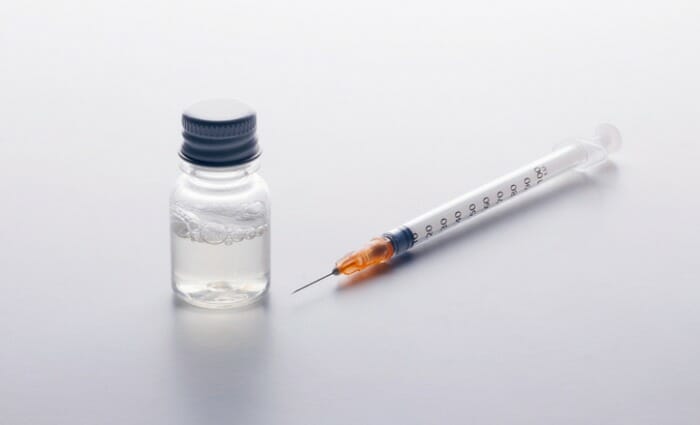Based on our experience with every Testosterone Optimization Therapy (TOT) method of delivery, the single most effective form of TOT to optimize testosterone levels is via injection. The four main types of injectable testosterone formulations found on the market today are as follows:
- Undecanoate
- Propionate
- Cypionate
- Enanthate
We want to empower you with the knowledge to make the right call for your body. In this 2-part guide, we will discuss the various injectable testosterone delivery systems in depth and how they differ concerning their behavior in the bloodstream. 
Testosterone Undecanoate
This injectable testosterone preparation is better known as Nebido and is used in Europe and Scandinavian countries. In 2014, Nebido was licensed in the U.S. by the FDA under the name “Aveed” by Endo Pharmaceuticals. In theory, it is a perfect formulation because it has a very long half-life (the length of time the ester is bioactive in the body.) It needs to be injected only once every 10 to 14 weeks. However, in practice, many men who have used it, report ‘the effects of valleys’ associated with lower levels of testosterone such as lows in mood, sex drive, and assertiveness. It typically happens from a longer-acting testosterone ester that often loses its effectiveness around weeks 7–10 of a standard 14-week injection protocol.
Each user is biochemically unique in the way his body will metabolize the testosterone ester into the bloodstream. Some break it down much faster than others, which causes these noticeable drops at 7-10 weeks into the injection protocol. Anecdotally, Nebido has rarely been found to raise testosterone levels above the midrange of ‘normal’ when measured between 4-8 weeks into therapy. Most concerning, however, is the potential of having higher estrogen levels with very little testosterone from the injection of the undecanoate leftover from the original dose. In other words, a patient will have to experience side effects from the lack of balance that exists due to low testosterone levels and higher estrogen levels, all while waiting for the next injection to come! And it was only in 2017 that clinicians were allowed to adjust the therapeutic dosage by decreasing the time between injections. 
Also, note that Aveed’s website offers a very stern warning of the risk of “serious pulmonary microembolism (POME) reactions and anaphylaxis” upon injection. In other words, there is a risk of a user experiencing a severe adverse reaction from the dose. It is due to the chemical particulates in the injectable formulation (which are used to extend its half-life) being potentially harmful upon injection to some users. This form of TOT looks excellent from a theoretical standpoint, but real-world experience tells a different story. Based on the current documented results, we can’t recommend this form of injectable therapy, especially in comparison to the next three injectable options we are going to discuss. Stay tuned for The Optimal TOT Protocol: Injectable Testosterone – Part 2.



